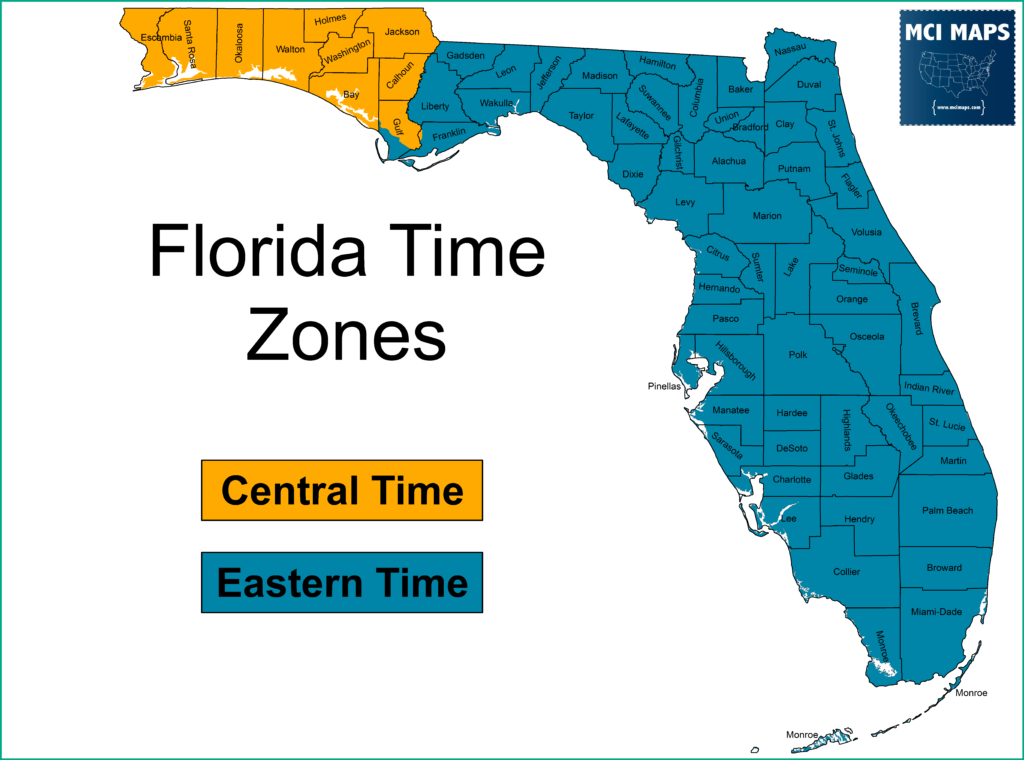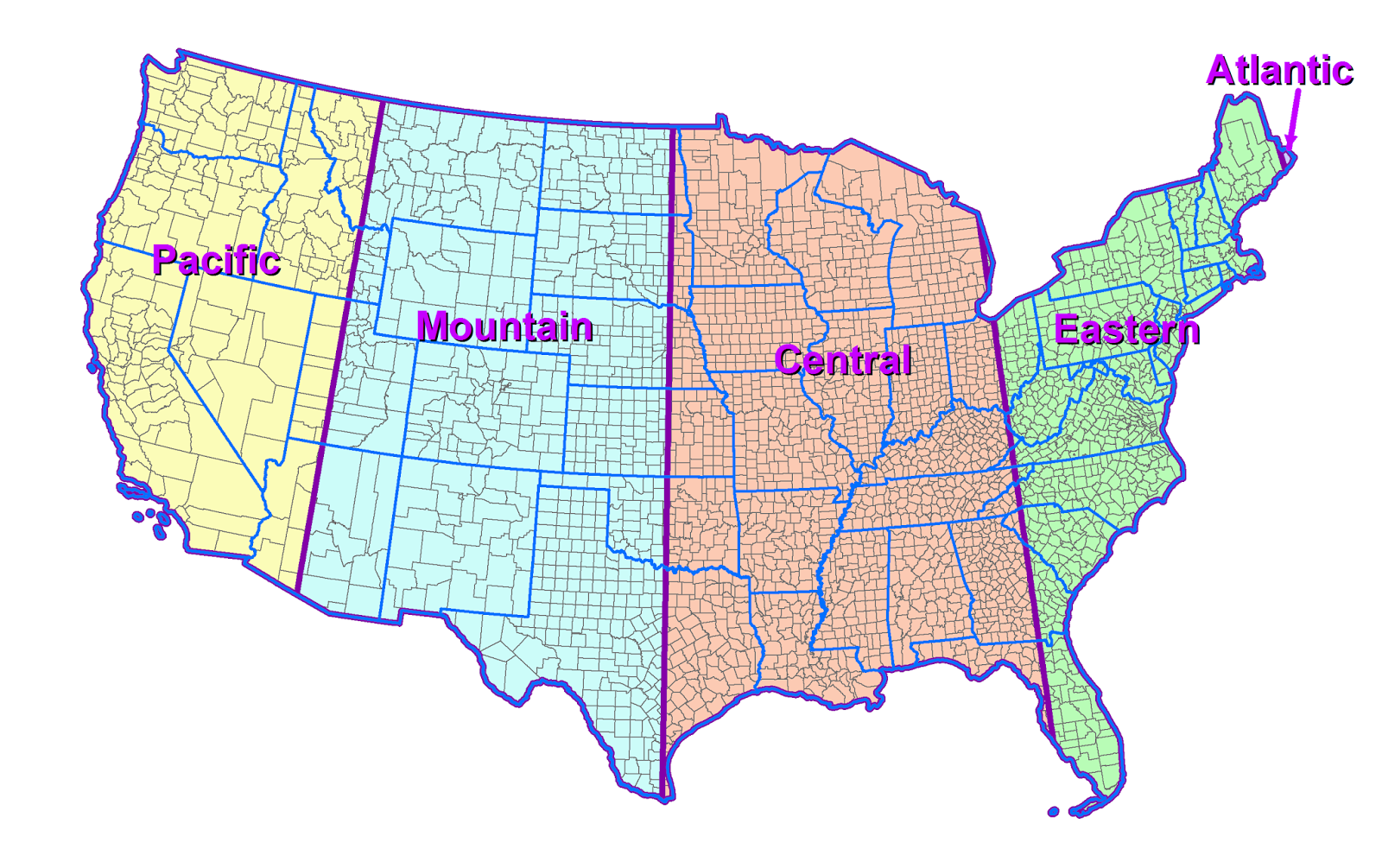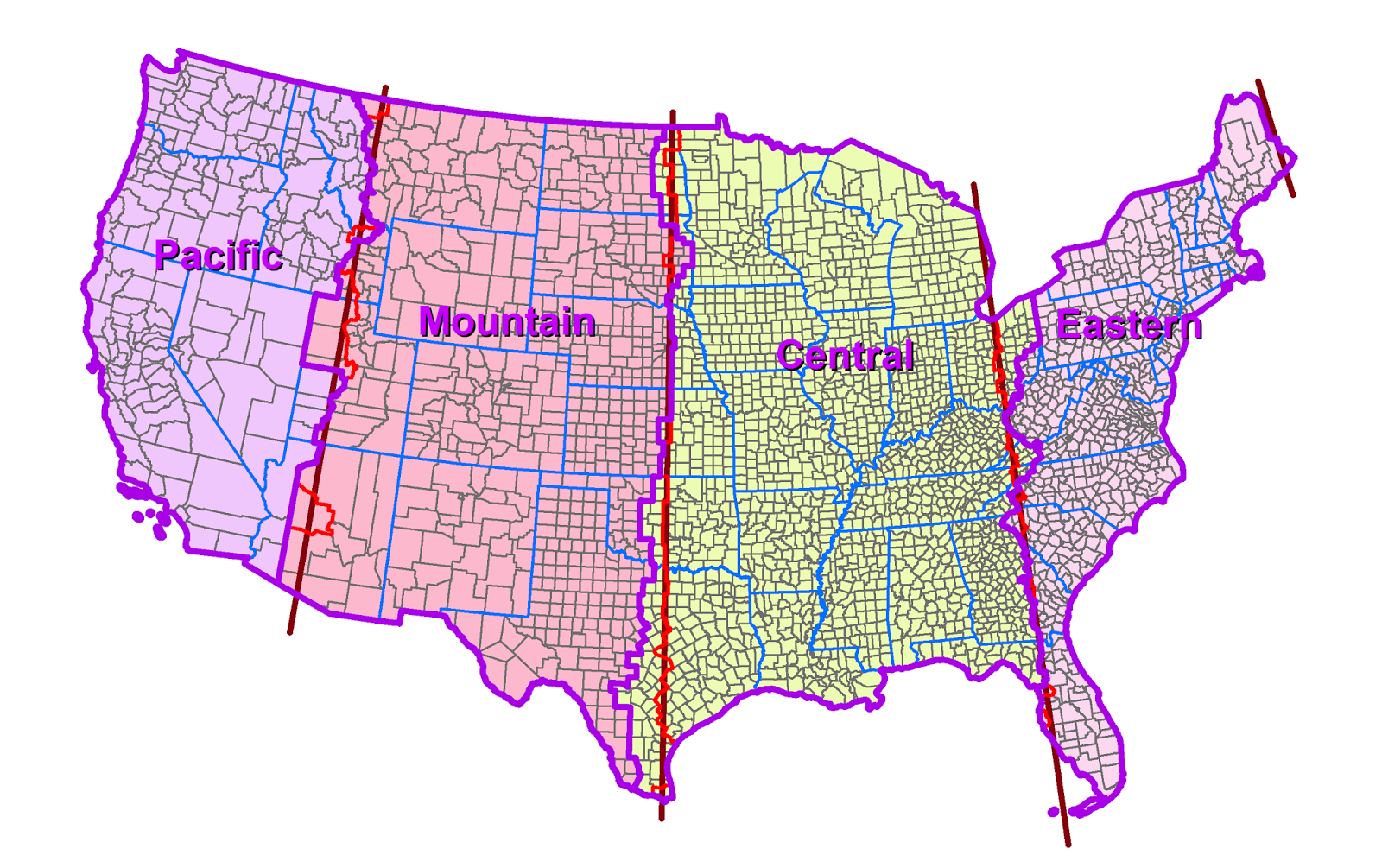

The North American zones were named Intercolonial, Eastern, Central, Mountain, and Pacific. It was inaugurated on Sunday, November 18, 1883, also called "The Day of Two Noons", when each railroad station clock was reset as standard-time noon was reached within each time zone. For example, the border between its Eastern and Central time zones ran through Detroit, Buffalo, Pittsburgh, Atlanta, and Charleston. The borders of its time zones ran through railroad stations, often in major cities. Allen, the editor of the Traveler's Official Railway Guide. and Canadian railroads implemented a version proposed by William F. Dowd's system was never accepted by North American railroads. In 1870 he proposed four ideal time zones having north–south borders, the first centered on Washington, D.C., but by 1872 the first was centered on meridian 75° west of Greenwich, with natural borders such as sections of the Appalachian Mountains. Dowd proposed a system of hourly standard time zones for North American railroads around 1863, although he published nothing on the matter at that time and did not consult railroad officials until 1869.

ġ913 time zone map of the United States, showing boundaries very different from todayĬharles F. Some junctions served by several railroads had a clock for each railroad, each showing a different time. Each railroad used its own standard time, usually based on the local time of its headquarters or most important terminus, and the railroad's train schedules were published using its own time. Timekeeping on North American railroads in the 19th century was complex. This standard was known as New Zealand Mean Time. It was based on longitude 172☃0′ east of Greenwich, that is 11 hours 30 minutes ahead of GMT. On November 2, 1868, the then British Colony of New Zealand officially adopted a standard time to be observed throughout the colony. Some British clocks from this period have two minute hands, one for the local time and one for GMT. By 1855, 98% of Great Britain's public clocks were using GMT, but it was not made the island's legal time until August 2, 1880.

This practice was soon followed by other railway companies in Great Britain and became known as Railway Time.Īround August 23, 1852, time signals were first transmitted by telegraph from the Royal Observatory.
#Eastern time zone portable
In November 1840, the Great Western Railway started using GMT kept by portable chronometers. In the 19th century, as transportation and telecommunications improved, it became increasingly inconvenient for each location to observe its own solar time. The control panel of the Time Zone Clock in front of Coventry Transport Museum


 0 kommentar(er)
0 kommentar(er)
